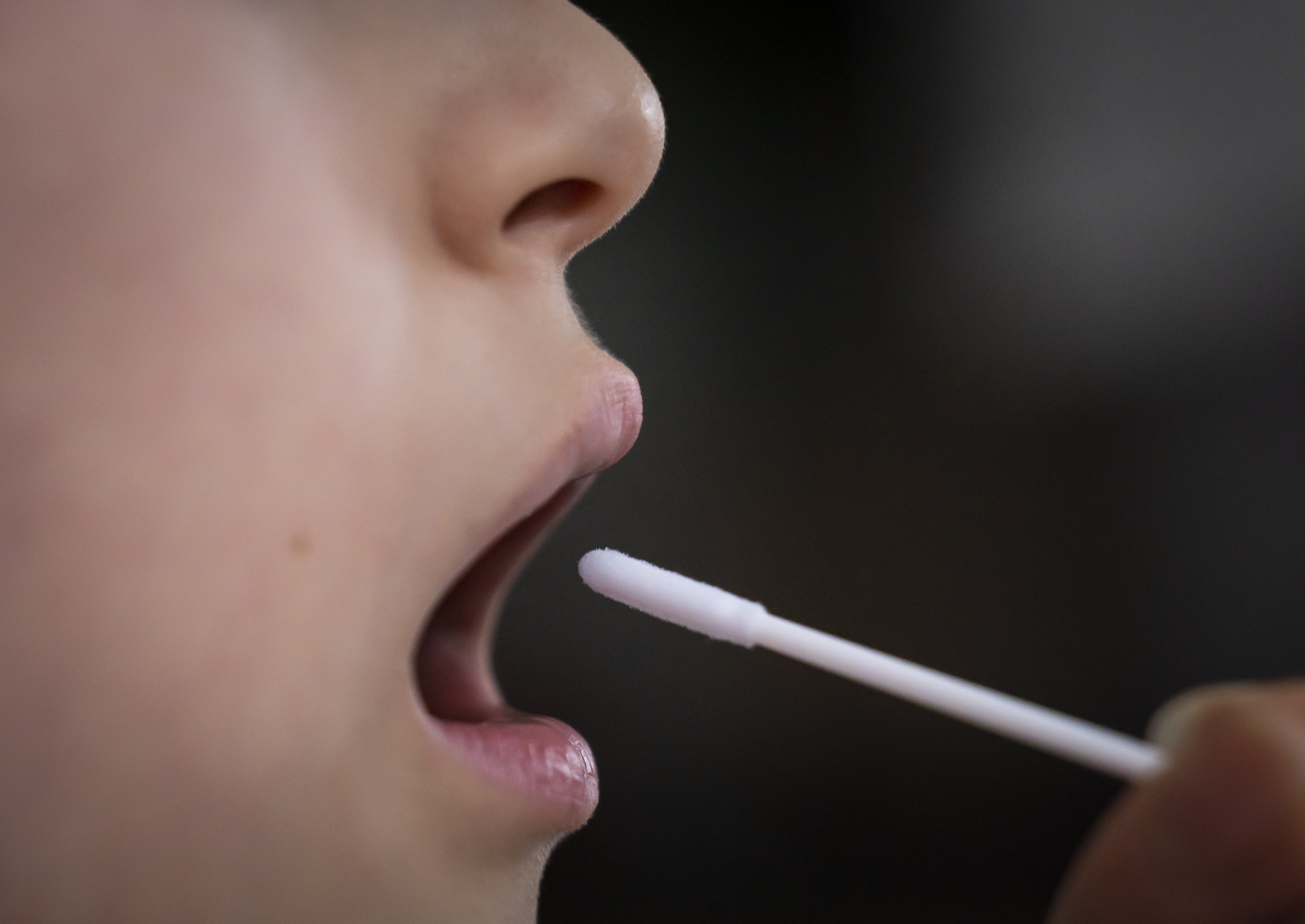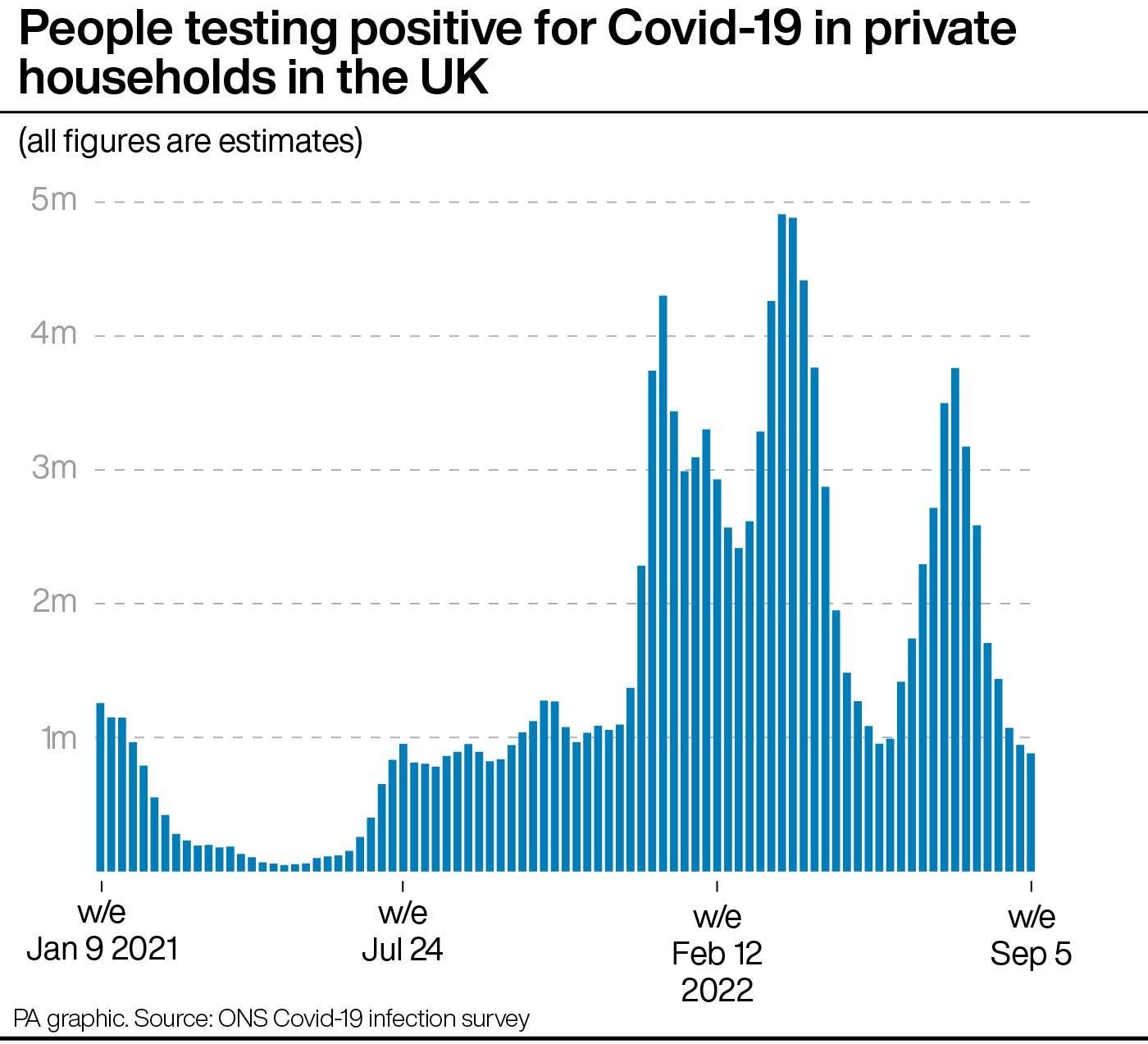UK Covid-19 infections drop to lowest level for nearly a year
The overall number of infections has been on a downwards path since early July after the peak of the Omicron wave

Your support helps us to tell the story
From reproductive rights to climate change to Big Tech, The Independent is on the ground when the story is developing. Whether it's investigating the financials of Elon Musk's pro-Trump PAC or producing our latest documentary, 'The A Word', which shines a light on the American women fighting for reproductive rights, we know how important it is to parse out the facts from the messaging.
At such a critical moment in US history, we need reporters on the ground. Your donation allows us to keep sending journalists to speak to both sides of the story.
The Independent is trusted by Americans across the entire political spectrum. And unlike many other quality news outlets, we choose not to lock Americans out of our reporting and analysis with paywalls. We believe quality journalism should be available to everyone, paid for by those who can afford it.
Your support makes all the difference.Total Covid-19 infections in the UK have dropped to their lowest level for nearly a year.
However, the trend in some parts of the country is uncertain, with increased numbers in Scotland.
Some 881,200 people in private households are estimated to have had coronavirus in the week to September 5, according to the Office for National Statistics (ONS).
This is down 7% on the previous week and is the lowest UK-wide total since the week to September 25 2021, when the number stood at 837,800.
The overall number of infections has been on a downwards path since early July, when the total hit 3.8 million at the peak of the wave caused by the Omicron BA.4 and BA.5 subvariants of the virus.
The 7% drop in the latest figures is the smallest week-on-week percentage fall since the current decline began, however.

There are also contrasting trends among UK nations and regions.
In England, the percentage of people testing positive for coronavirus in the week to September 5 was 705,800, or around one in 75 – down from 770,800, or one in 70, in the seven days to August 28.
But in Scotland, 113,500 people were likely to have tested positive for Covid-19 in the latest week, or one in 45 – up from 104,400, or one in 50.
Trends in both Wales and Northern Ireland were described by the ONS as “uncertain”.
The latest estimate for infections in Wales is 28,200 people, or one in 110, compared with 31,500 in the previous week, or one in 95.
And in Northern Ireland, the estimate is 33,700, or one in 55 people, compared with 38,000, or one in 50.
Infections are estimated to have fallen in London and south-east England, while in all other regions the trend is uncertain.
Among age groups in England, the percentage of people testing positive is estimated to have increased for children from age two to school year six.
All other groups have seen a decrease, except those from school year 12 to age 34, where the trends were again described as uncertain.